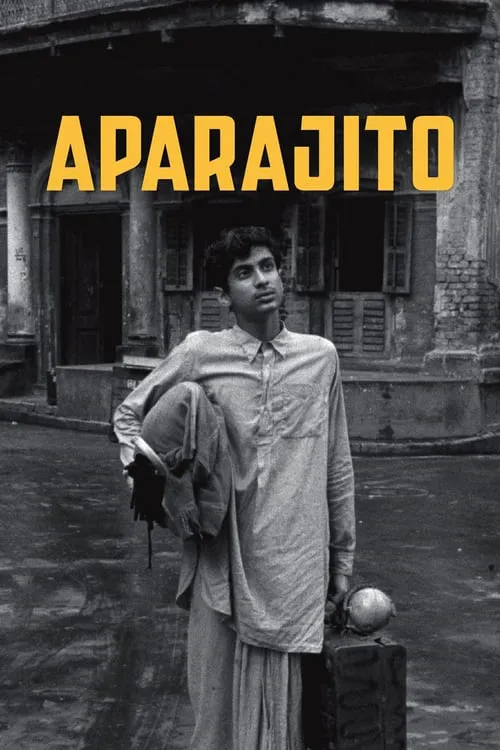Aparajito

Plot
Aparajito, the second installment of Satyajit Ray's Apu trilogy, chronicles the life of Apu, now a young teenager, as he grapples with the complexities of growing up and the world around him. This seminal film, released in 1956, continues to explore the nuances of Indian culture, family dynamics, and the human experience, weaving a rich tapestry that captivates the viewer. The story begins with Apu (played by Pinaki Sengupta) and his family having relocated to Varanasi, a revered holy city in northern India. This move marks a significant shift for the family, who left behind their rural roots for the bustling metropolis of Calcutta (now Kolkata). The urban landscape is overwhelming, and the family struggles to adjust to their new life. Apu's father, Amal, played by Shaheed (in the first film) but deceased (in a brief flashback) before the film begins (played by Bikash Roy in flashbacks), having moved away after marrying Sarbajaya, Apu's mother, played by Karuna Banerjee, was supposed to find a well-paying job but he leaves Apu and his mother with barely enough financial support. Apu's family, however, faces hardships as they struggle to make ends meet. Despite the financial constraints, they try to adapt to their new surroundings, often finding themselves in precarious situations. Apu's mother, a kind and endearing figure, takes up a job to provide for her son and herself. This decision comes with a heavy heart, as she is forced to leave Apu in the care of his maternal uncle, Pratik, played by Kamal Mitra, a devout and traditional Brahmin. The story unfolds as Apu navigates this new world, learning to navigate the complexities of human relationships and the intricate social norms of his community. His journey is marked by numerous challenges, including his initial struggles to adapt to school, where he experiences the harsh realities of poverty and neglect. He faces rejection from his classmates, who mock him for being poor. However, Apu's innate curiosity and intellectual aptitude soon begin to shine through, as he starts to question the world around him and seek answers. As Apu progresses through his academic journey, his relationship with his mother becomes increasingly complex. His love and admiration for her intensify, but he also begins to resent her sacrifices and the financial struggles she faces. The mother-son dynamic undergoes a significant transformation as Apu starts to mature and assert his individuality. In Kolkata (then known as Calcutta), Apu is faced with further hardships, struggling to cope with the city's unforgiving environment. He finds solace in his studies, however, and begins to excel academically. His academic success brings him recognition and pride, but it also deepens the rift between him and his mother, who feels abandoned and unappreciated. As Apu navigates the complexities of his teenage years, he grapples with the moral and philosophical dilemmas of life. He is confronted with the harsh realities of poverty, class differences, and social inequality. Through his experiences, Apu begins to question the values and traditions of his community, often finding himself at odds with the expectations of his elders. The film culminates with Apu's graduation from high school, a moment of triumph for the young man. However, this milestone also marks a turning point in his relationship with his mother, who, despite her sacrifices, feels abandoned by her son's growing independence. As Apu prepares to leave for college, his mother's sorrow and frustration come to the surface, highlighting the bittersweet nature of his journey. Aparajito is a poignant portrayal of the human experience, capturing the complexities of growing up, family dynamics, and the struggle to find one's place in the world. Through Apu's journey, Satyajit Ray offers a nuanced exploration of Indian culture, highlighting the struggles and triumphs of those living in poverty. The film's rich characters, coupled with its thought-provoking themes, make it an enduring masterpiece of world cinema, a testament to the power of storytelling to capture the essence of the human experience.
Reviews
Recommendations




